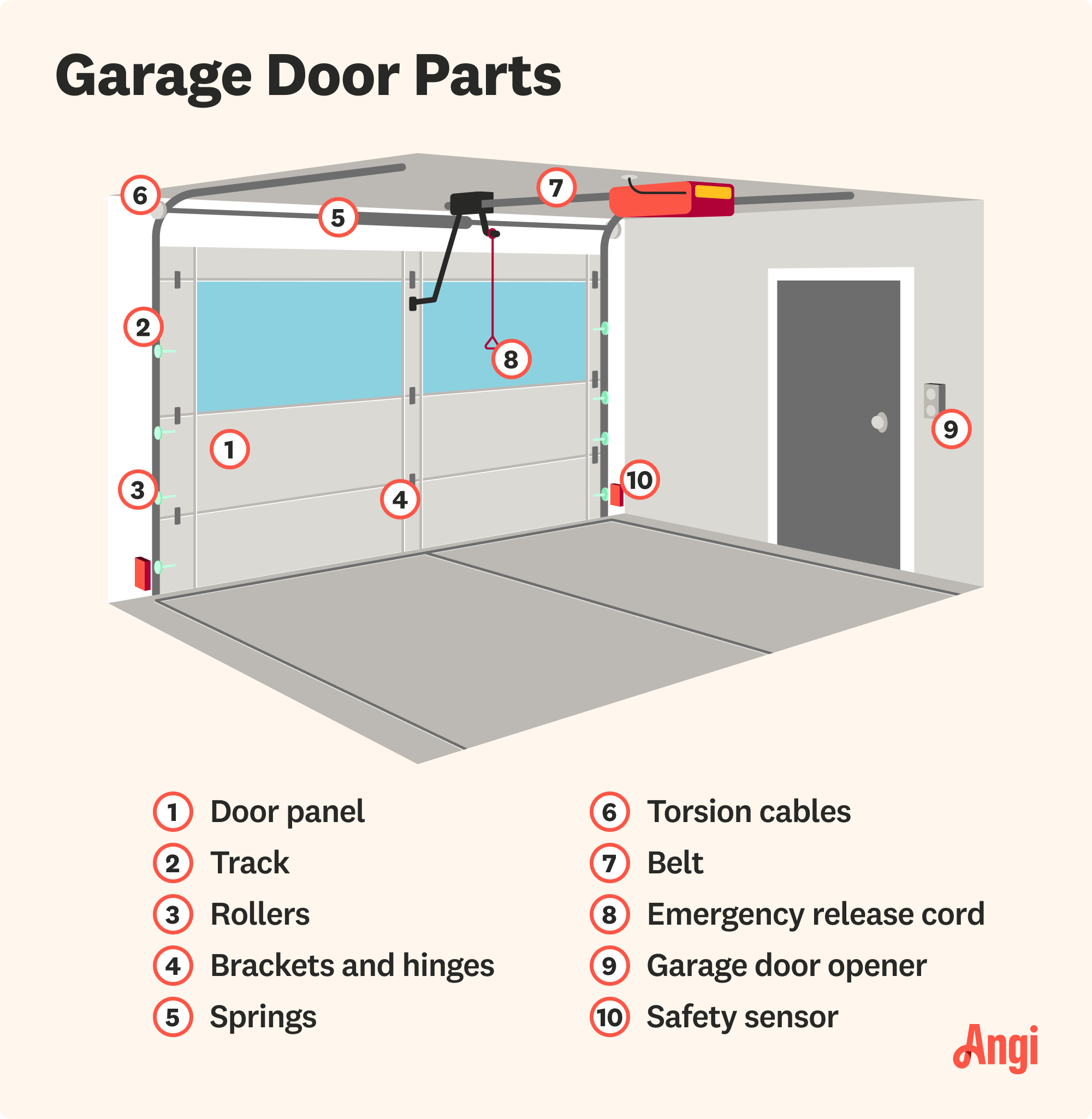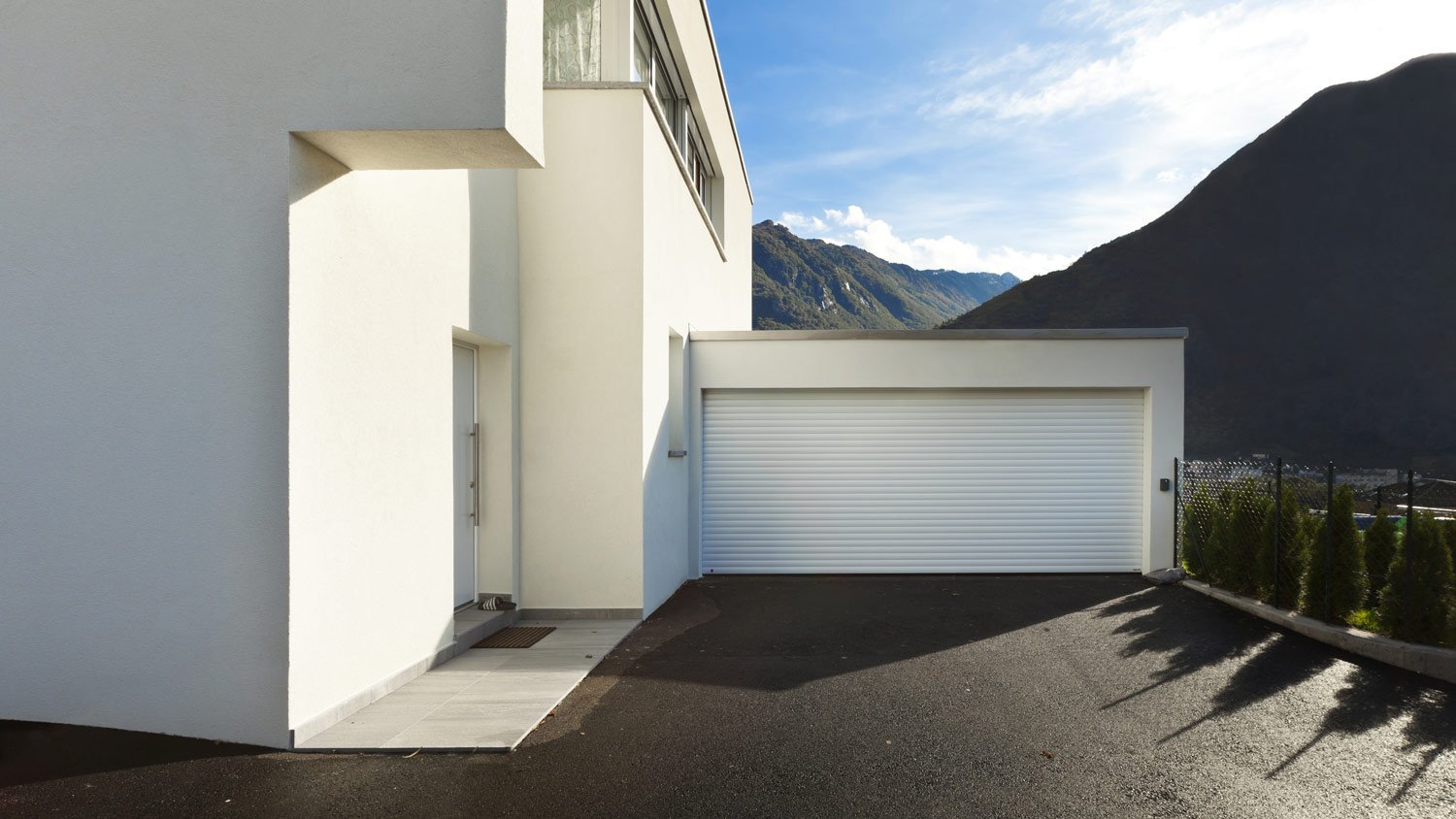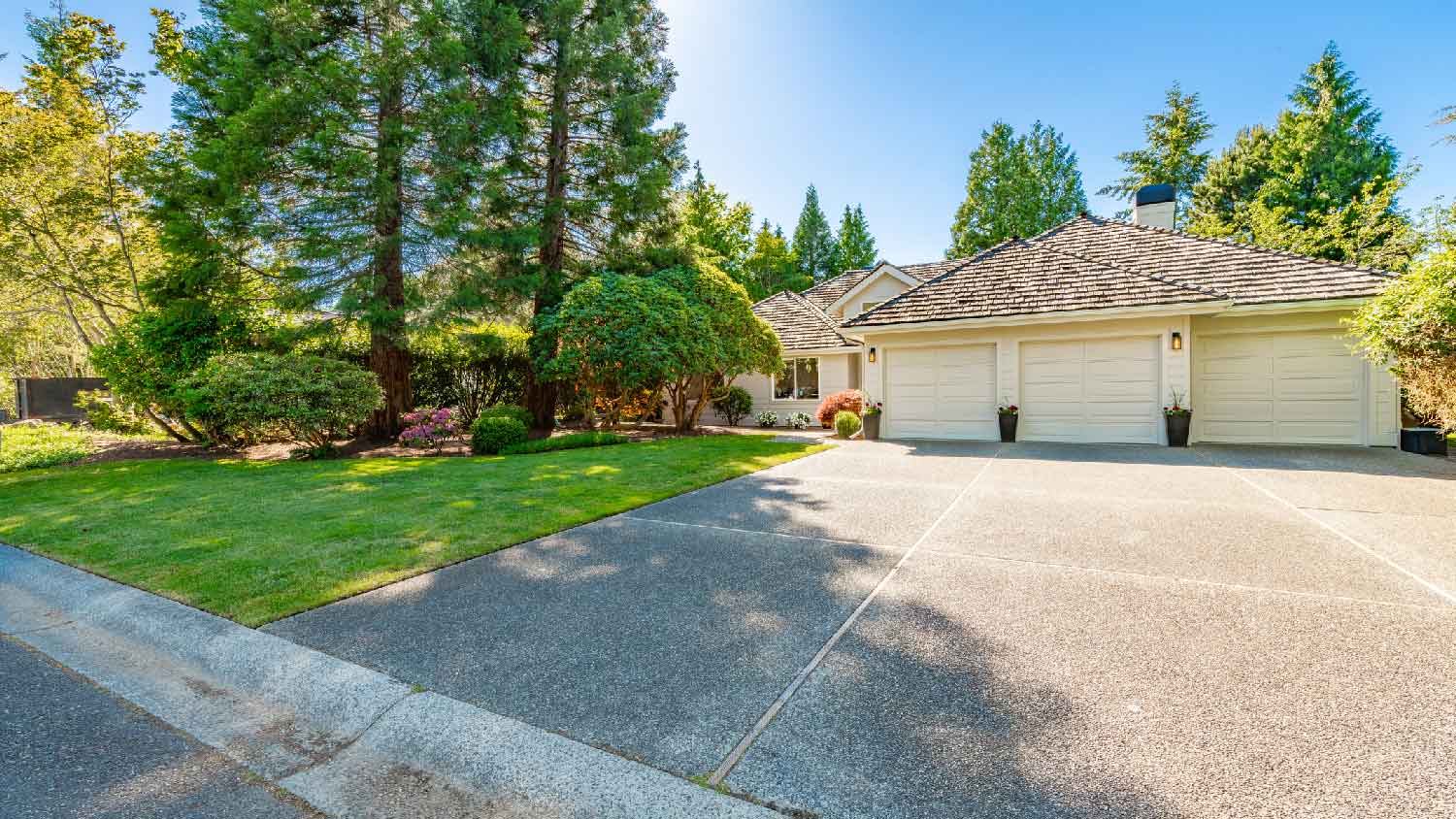6 Reasons Why Your Garage Door Won’t Open With the Remote and How to Solve It
Don’t get left out in the cold—figure out how to solve your garage door opener problems with a few simple tricks


There are several reasons why your remote isn’t opening the garage door.
There are several DIY solutions, such as getting a new remote and resetting the keypad.
You may need to fix an individual component or get a replacement.
If you use a car every day, a garage door that won't open is, well, annoying, to say the least. But don’t worry—a solution to the problem could be just a few minutes away. There are several reasons why your garage door won’t open when you hit the button on your remote control, but you can try several tricks to get things running smoothly again.
Signs Your Garage Door Remote Control Doesn’t Work
Keeping an eye out for common signs that your garage door remote control doesn’t work anymore can help you take action quickly to have your garage door welcoming you home again soon. Here are a few ways to tell if your remote control needs replacing:
Nothing happens when you press the button or flip the switch to operate the garage door.
The LED lighting on your remote is off or dim.
You don’t hear any sounds when you attempt to operate the remote.
The door doesn’t fully respond and won’t open or close properly.
The remote only works when you’re extremely close to the garage door.
1. The Remote Is Bad
If your garage remote control isn’t opening the door, a few potential issues might be at hand. You might be out of range, the antenna could be damaged, or the batteries could need replacing.
How to Fix It
First, you’ll want to check if getting more within range helps. To do this, simply get closer to the door and try using the remote again.
If this doesn’t work, look at the antenna. The antenna is usually pointed toward the door, hanging down from the operator's casing. If the antenna is damaged, it could be preventing the garage door from functioning. If the antenna is visibly damaged or appears to be broken, contact a local garage door repair service to diagnose the issue.
Next, you can try to reprogram the remote. For most models, this usually involves holding down the “learn” button for a few seconds until it starts blinking and then holding it once more. Refer to your manual for more thorough and model-specific instructions.
If the door still doesn’t open, your remote's battery may be dead. This fix will require a change of batteries. If the batteries came pre-installed, you might have never changed them before—luckily, it’s usually a simple task. Garage remote batteries are typically 3-volt lithium or 12-volt lithium batteries, but you can open the remote and see which yours takes.
After purchasing replacements, slide off the back cover, remove the old batteries, and slide in the new batteries, making sure the battery tips align properly inside.
Note: Sometimes, this job requires a screwdriver to remove a piece holding the batteries in place.
2. The Keypad Is Faulty
If your garage door isn’t opening, your keypad could be out of sync with the remote. The keypad is the button remote that requires a security code for the door to open.
How to Fix It
Check the instructions in the user manual for how to reset the keypad. If this is the issue, the door should open after you properly reset the keypad.
3. The Photo Eye Is Blocked or Misaligned

The photo eye is a small sensor about 4 to 8 inches above the floor inside the garage door. The photo eye’s function is to detect something blocking the garage path door and signal the door to stop closing.
A blocked photo eye may be the reason why your garage door isn’t closing—it can become damaged or blocked due to moisture or rain. The photo eye can also become unaligned due to wear and tear or physical pressure.
How to Fix It
Wipe off the photo eye with a rag, dusting away any debris or dust. Also, inspect the cord attached to the photo eye for damage.
The photo eye consists of two pieces that should align face to face. If they are misaligned, this will cause the garage door to have problems. You can use a level to ensure the two parts are at equal heights.
Remove any obstructions blocking the photo eye. If the photo eye is unobstructed, an LED laser beam goes from one end of the photo eye to the other. When things are in the way, both parts may not receive the laser, and the garage door won't open.
4. The Tracks Are Unaligned
Garage doors have metal tracks that keep the door in place, but if it isn’t properly aligned on its tracks, this will likely cause the door to stop functioning properly. Additionally, the tracks must be straight and even on either side.
This issue may happen over time or as the result of something heavy hitting the track—like from backing a car into the door.
How to Fix It
Check the track for visible bends, spaces, or obstacles in the tracks. If you notice any imperfections, see if you can straighten them. It’s also a good idea to lubricate the tracks with a non-permeable lubricant specifically for garage doors.
If you hear squeaks, or it sounds like there is friction as the door slides, you may need to readjust the screws. Loosen the screws holding the track in place, then tap them back into place and retighten the screws.
If all else fails, contact your garage door company or a local garage door repair service. A professional inspector can examine your door and fix the issue properly. Garage door repair costs range from $150 to $375 on average, depending on the scope of the project.
5. The Springs Are Broken

Garage doors use torsion springs, which lift and lower the door. They run horizontally over the door's width. Over time, these springs can become worn out and unable to function properly.
Broken springs are a common reason for a garage door failing to open. This problem can result from general wear and tear, rust, and improper maintenance. In general, you should inspect the torsion springs once a year for rust or weakening.
Replacing garage doors and garage door springs can be dangerous. Garage doors are very heavy and the springs are under a lot of tension. A garage door pro has the tools and experience to do this project safely.
How to Fix It
Check to see if there are gaps between the spring coils. If there are, the springs or garage door cables may have snapped, and you’ll need to either get replacement springs or have your current springs tightened. The average cost for replacement springs is between $150 and $350.
No matter the garage door size, replacing your garage springs is not a DIY job. If one of the springs snaps during installation, it can cause serious injuries. This job is dangerous and should be left to a professional equipped with the knowledge and proper tools.
6. The Lock Button Is Engaged
There's one last thing to try before you start preparing for garage door replacement costs—which range from $750 to $1,700 for more extensive replacements and $225 to $550 for garage door opener installation costs.
Your garage door may stick because of an engaged lock button. The lock button is a safety feature that turns your door's lock function on and off by disabling the remote control. When the lock button is engaged, a person trying to operate the remote control won't be able to open the door. If you didn't intend to lock your door, it's possible that someone accidentally engaged the garage door's lock feature by pressing against the control panel.
How to Fix It
Start by finding the lock button for your garage door. Since it's intended to prevent someone with a garage door remote control from opening the door, this button isn’t featured on the remote control. It is often placed on the wall control panel that comes with your garage door system when installing the garage door opener. Most garage door opener manufacturers require you to press the button down for several seconds to engage and disengage the feature.
If you’ve inspected your garage door system and are confident that the garage door isn’t the issue, then it’s a safe bet that the garage door opener remote is the problem. However, it’s best to hire a pro to inspect your garage if you have any hesitations because it’s not always easy to identify the root cause of a faulty garage door system.
There are many reasons why a garage door opener might suddenly stop working. Inspect your circuit breaker to see if the power’s been flipped off, check the alignment of your garage door, look for faulty wiring, and try swapping out the batteries for a quick fix.
You can also visually inspect your garage door opener for signs of trouble. If the door starts and stops and makes grinding sounds, then you might need to lubricate the garage door opener chain and track to help kick things into gear.
















